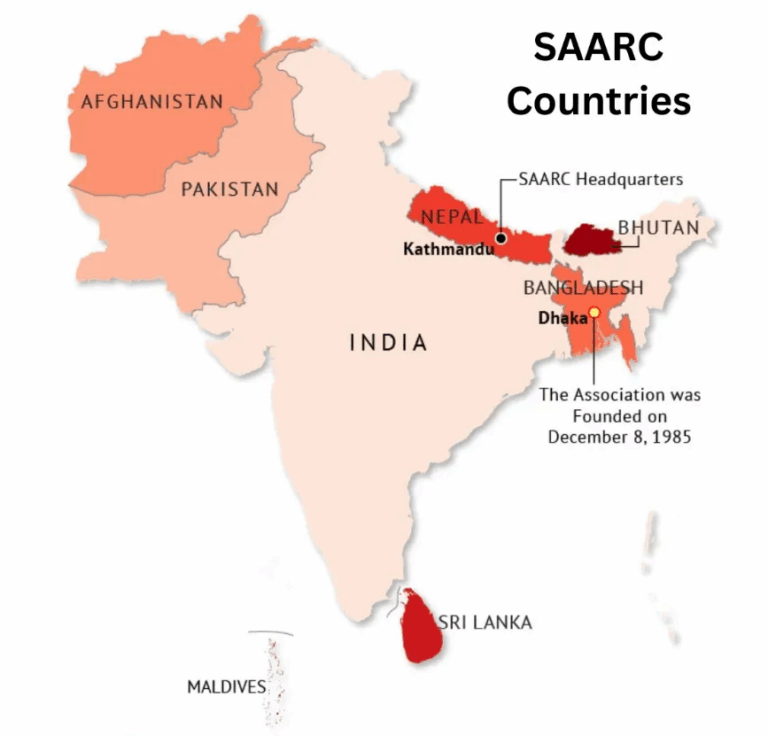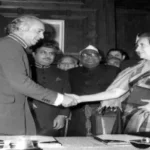Blame not the messenger in India’s Diplomacy
India’s diplomacy analysis after Operation Sindoor reveals that victory on the battlefield must be matched by precision in global narratives.
Why in the News?
India’s diplomatic corps has come under sharp public scrutiny in the aftermath of Operation Sindoor, India’s retaliatory military operation following the terror attack in Pahalgam, Kashmir.
- Critics argue that India failed to garner unequivocal international support for the strikes, in contrast to the global solidarity witnessed after similar actions in 2016 (post-Uri) and 2019 (post-Pulwama).
- The article urges reflection not on the messengers, the diplomats, but on the message itself that India is conveying to the world, and how the international landscape has changed in recent years.

Background
Historically, India has enjoyed broad international sympathy after terror attacks, particularly when Pakistan’s complicity was clear.
- After the 2008 Mumbai attacks, India was able to push for UNSC designations against Lashkar-e-Taiba (LeT) leaders and have Pakistan grey-listed by the Financial Action Task Force (FATF).
- Similarly, after the 2016 Uri attack, India successfully boycotted the SAARC summit in Islamabad, receiving support from neighbouring countries.
- Post-Pulwama in 2019, the global tide again favoured India, leading to the UN listing of Jaish-e-Mohammad (JeM) chief Masood Azhar, with even China relenting under pressure.
- However, Operation Sindoor in 2025 marks a departure from this pattern. Despite the lethal terror attack in Pahalgam, India’s retaliatory actions have not evoked the same level of regional or global endorsement.
- Instead, countries like China, Turkiye, Azerbaijan, Malaysia and the Organisation of Islamic Cooperation (OIC) have backed Pakistan, while the United States under Donald Trump has made troubling equivalences between India and Pakistan, even proposing mediation in Kashmir, a diplomatic red flag for India.

Feature
- The article outlines three major criticisms directed at Indian diplomacy post-Sindoor.
- First, India has not been able to secure international political support for its retaliatory strike, a contrast to the kind of solidarity it received in earlier crises.
- Despite efforts by Indian missions and diplomatic delegations sent to over 30 countries, including the U.S., the global response has been lukewarm.
- Pakistan, on the other hand, has managed to gain diplomatic traction by amending UNSC language to remove reference to The Resistance Front (TRF), assuming important UNSC committee positions, and securing loans from multilateral agencies.
- Second, the shift in India’s message is itself under scrutiny. Prime Minister Modi’s “New Normal” doctrine includes:
- Any act of terror is an act of war,
- India will not bow to nuclear blackmail, and
- No distinction between state and non-state actors has raised eyebrows in global capitals. The rhetoric may be morally justified, but diplomatically, it is seen as escalatory and risk-prone, especially in a world already fatigued by multiple conflicts from Ukraine and Gaza to the South China Sea.
Third, the article highlights how India’s international image has shifted since 2019. The global narrative is increasingly critical of India’s domestic actions, including:
- The abrogation of Article 370,
- The Citizenship (Amendment) Act (CAA),
- Alleged transnational repression (U.S. and Canada killings),
- Internet shutdowns and declining democratic indicators.
These issues, although internal, are now intertwined with India’s foreign policy posture, and delegations promoting India’s counterterrorism position are increasingly questioned about their domestic democratic credentials.
Challenges
- India faces a multi-pronged challenge in its diplomatic messaging.
- First, there is a perception mismatch between how India sees itself as a responsible power defending against terror and how the world interprets its actions, especially amid fears of escalation in nuclear flashpoints.
- The “New Normal” statements, while domestically assertive, have limited traction abroad, particularly among India’s strategic partners who are wary of further militarisation of South Asia.
- Second, the credibility of India’s moral high ground is increasingly compromised. The country’s neutral stance on Russia’s invasion of Ukraine, increased oil imports from sanctioned regimes, and silence on the Gaza conflict have undermined India’s traditional appeal as a voice of democratic values in the Global South and the West.
- Third, Pakistan’s diplomatic manoeuvres, despite its poor global image, have yielded results at multilateral for, as seen in the UNSC committee appointments and its bid to internationalise the Kashmir issue yet again.
- Fourth, the Trump administration’s ambiguous position, offering to mediate and equating both nations, further complicates India’s efforts.
- Despite multiple back-channel diplomatic engagements and high-level meetings, Washington’s public posture remains non-committal.
Way Forward
- The article makes a compelling case that instead of blaming diplomats, India must reassess its diplomatic messaging and strategy.
- To regain global support, India should focus on playing to its core strengths: a pluralistic, democratic, rule-abiding and stable power in the Global South.
- India’s foreign policy must be anchored in realism, not only in terms of geopolitical shifts, but also by recognising that rhetoric alone cannot substitute for sustained, values-based diplomacy.
- Domestically, India must work to restore democratic legitimacy by addressing human rights concerns, ensuring transparency, and reducing the perception of majoritarianism.
- These steps would not only strengthen India’s moral case internationally but also empower its diplomats, who are increasingly required to defend both external security actions and internal governance practices abroad.
- Moreover, India should calibrate its messaging, balancing strong deterrence against terror with measured language that doesn’t alienate its global partners.
- It must also enhance its multilateral diplomacy, especially at platforms like the UNSC, FATF, BRICS and G20, to consolidate support against Pakistan’s use of terrorism as state policy.
Conclusion
In an increasingly fractured and conflict-ridden world, India’s ability to carry the world with it on issues like cross-border terrorism and Pakistan’s complicity is critical to its strategic success. However, that ability is closely tied to how India projects itself not just as a regional power with hard military muscle, but as a democratic, rule-of-law-based, secular alternative to authoritarian or theocratic regimes.
MAINS PRACTICE QUESTION
Question: Why has India struggled to gain global diplomatic support after Operation Sindoor, and should the criticism be directed at its diplomats or its evolving foreign policy messaging?
PRELIMS PRACTICE QUESTION
Q. Which of the following correctly identifies the key international diplomatic setback faced by India post-Operation Sindoor, as discussed in Suhasini Haidar’s article?
Also Read : India’s digital diplomacy in Africa
Source: https://www.thehindu.com/opinion/lead/blame-not-the-messenger-in-indias-diplomacy/article69714222.ece







